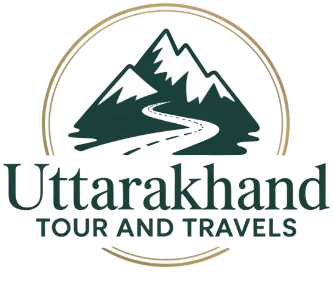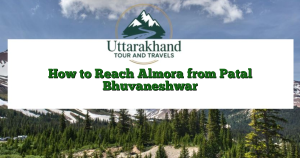Gangotri is one of the four sacred Char Dham pilgrimage sites and is located in the Garhwal Himalayas of Uttarakhand. It lies at an elevation of about 3,100 meters on the banks of the Bhagirathi River, marking the origin of the holy Ganges. Traveling from Mussoorie to Gangotri involves a scenic yet challenging journey through the Himalayas, combining long road travel with possible trekking.
Distance and Travel Overview
- Road distance: Approximately 200-230 km, depending on the chosen route.
- Travel time: Generally 8-12 hours by road, often split into two days for comfort and safety.
- No direct train or flight service; the journey is fully covered by road and on foot for the final stretch.
Step-by-Step Travel Plan from Mussoorie to Gangotri
1. Mussoorie to Uttarkashi by Road
- Distance: About 150 km.
- Approximate travel time: 6 to 8 hours.
- Route: Mussoorie → Dehradun → Rishikesh → Devprayag → Srinagar (Garhwal) → Uttarkashi.
- Road conditions: Mostly good, paved national highways through picturesque valleys, though mountain terrain causes winding roads and slow sections.
- Notes: The roads can experience fog, landslides (especially in monsoon), and heavy traffic during pilgrimage season.
- Recommended rest: Due to the long distance and altitude changes, many travelers stay overnight at Uttarkashi before proceeding to Gangotri.
2. Uttarkashi to Gangotri by Road
- Distance: Approximately 75 km.
- Approximate travel time: 3 to 4 hours.
- Route: Uttarkashi → Harsil → Gangotri.
- Road conditions: Mountainous and narrower roads with potential for weather-related disruptions; caution is advised.
- Note: This is the last motorable point near Gangotri.
Alternative Routes and Tips
- If you want to explore more, you can take a detour to Harsil for beautiful alpine meadows before reaching Gangotri.
- Travel season is an important consideration; the road to Gangotri is open typically from late April to early November. The rest of the year it may be closed due to heavy snowfall.
- Monsoon season (July-September) can bring landslides and roadblocks; travel cautiously and allow extra time.
- Carry warm clothing and necessary trekking shoes, as temperatures are cooler and the terrain rugged.
Final Stretch to the Gangotri Temple
- Gangotri itself is reached on foot after parking vehicles at the town.
- The temple is located close to the bank of the river, accessible by short walks from the motorable road.
Important Travel Tips
- Start early in the day to avoid difficult driving in the dark and to maximize daylight for mountain driving.
- Acclimatize yourself gradually; staying at lower altitudes or at Uttarkashi helps.
- Carry sufficient food, water, and medicines, especially if driving yourself.
- Check weather and road conditions before starting your trip as landslides and weather can impact the journey.
- Book transportation and accommodations well in advance during the Char Dham pilgrimage season (May to October).
Sample Itinerary Suggestion
| Day | Itinerary | Approx. Distance | Notes |
|---|---|---|---|
| 1 | Mussoorie to Uttarkashi | 150 km | Long drive; stay overnight |
| 2 | Uttarkashi to Gangotri | 75 km | Arrive and visit temple |
| 3+ | Local sightseeing / Return | – | Explore Harsil or return |
FAQs
Q: Is there a direct route from Mussoorie to Gangotri?
A: Not direct. The journey requires travel via Dehradun, Rishikesh, and Uttarkashi by road.
Q: How long does the total journey take?
A: Approximately 10-12 hours of driving, typically split over two days.
Q: Can I do this in one day?
A: It is not advisable due to the challenging mountain roads and length of the journey.
Q: Is the road safe for private vehicles?
A: Generally yes, but mountain driving experience is recommended due to winding roads and variable weather.
Q: Are there buses or shared transport options?
A: Yes, buses and shared jeeps operate seasonally between Dehradun/Rishikesh and Uttarkashi/Gangotri, especially during pilgrimage season.









